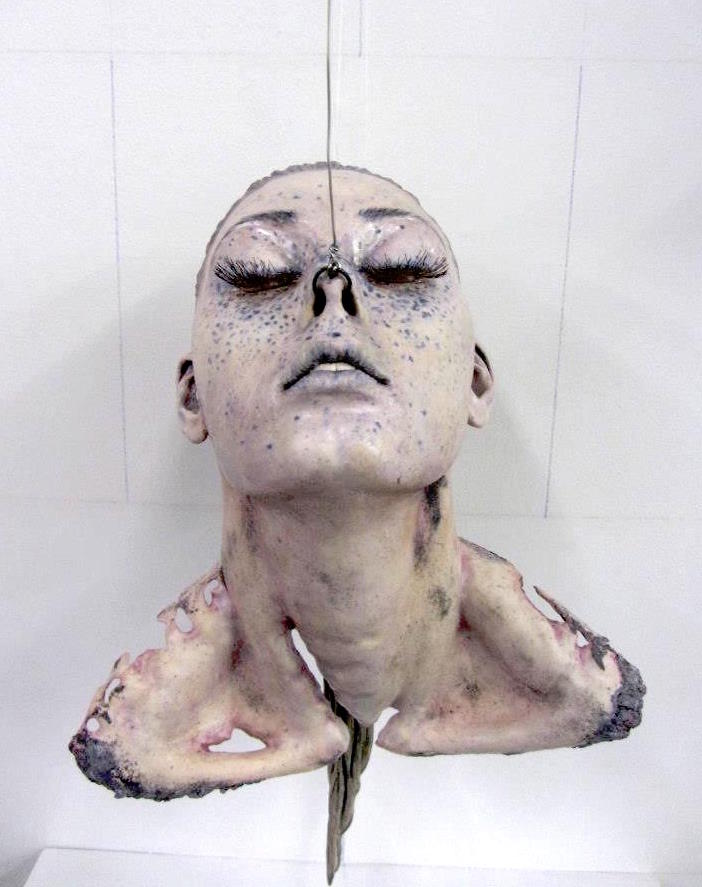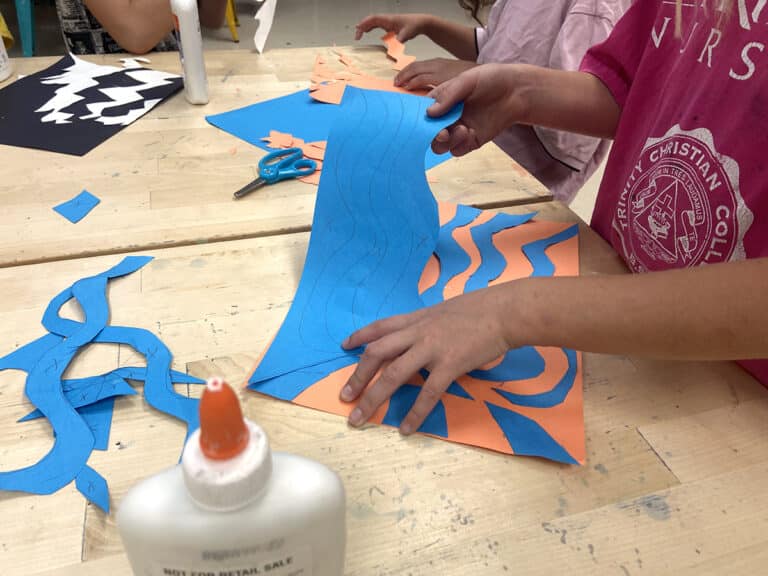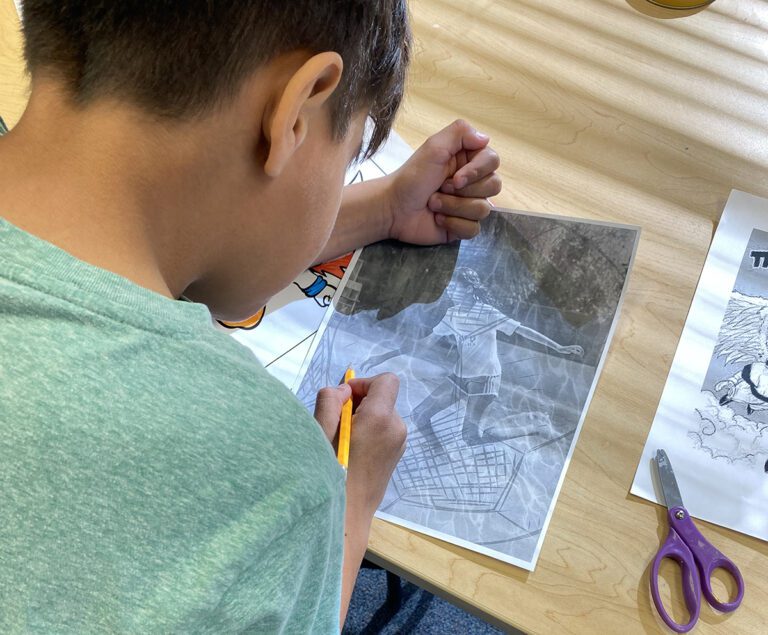This piece was researched and written over the course of approximately six months and includes interviews with art and design school graduates, dropouts, professors, administrators, representatives, and admissions counselors. The stories told here are not representative of all students’ experiences at art and design school; they simply form a cohesive and compelling narrative.
Nicole Henderson was in love with art school before she even arrived. The campus, the people, the environment, and the opportunity were what she always wanted. “It was almost like this utopia–it was a situation unlike anything else I could find,” she said. “I thought this was going to be the greatest experience of my life.”
Less than a year later, she was gone.

Like so many art school students, Nicole dropped out due to a confluence of factors. Lack of money, lack of sleep, lack of school living up to expectations. The admissions process and the first year of school are places where we might be advised to tread lightly. Rushing into what seems to be a dream situation is not necessarily the best decision.
For as much as some teachers lionize art school, for all the time we spend preparing portfolios, helping kids slog through the admissions process, and bragging about scholarship money received, there is a serious downside to art school as well. Far too many students don’t even finish their first year. Art schools and teachers alike want to put their best foot forward, so we spend a lot of time celebrating art school and artist successes. But there are lessons to be learned from the other side as well. And those lessons can be incredibly expensive.
The Admissions Process
“Getting your portfolio ready is the easy part. The difficult part comes when you realize you have to get yourself ready as well.” –Nicole
Scott Dickson is a Drawing professor at Kendall College of Art and Design and previously worked at a different art and design school as an admissions counselor. He says most art schools are looking for students that truly want to be there. According to Dickson, “Talent and creativity matter, but what schools want to find out is which student has a great work ethic and enthusiasm for the arts and learning in general.”

Sierra Dehghan, a former ceramics major at Kansas City Art institute, was one of those students who wanted to be there. “You’re 17, a school approves your portfolio, tells you that you have a future as an artist, throws scholarship money at you, and has you come visit their campus. How can you not want to move there immediately?” There is a pause in her voice as she thinks back to that initial infatuation. “It’s really easy to fall in love with a school when you’re that young. And you fall really hard.”

Kids are in love with a school, an environment, or a lifestyle. Hopes and dreams are laid out in front of them, portfolio approval validates all the work they’ve put in, and that dollar sign that comes with a scholarship offer is so enticing. But do they even know what admissions counselors are really looking for? Or if they are even ready?
We work so hard at getting kids into art school, yet so many drop out after the first year–sometimes even sooner. Maybe, before it comes to that point, we need to lay out the hard truths about what’s to come: the sleepless nights, the endless studio hours, and the few opportunities that await after graduation. Perhaps it’s essential for kids to understand the road to making a living doing what you love is long, especially when buried under a mountain of debt.
Maybe, before it comes to that point, we need to lay out the hard truths about what’s to come: the sleepless nights, the endless studio hours, and the few opportunities that await after graduation.
There’s a reason graduation rates rarely come up during the recruiting process: Only 1/3 of students attending art school graduate on time, and not even half graduate within 6 years. With an average art and design school costing $42,000 per year, a lot of time and money is dedicated to a graduation outcome that is uncertain. Some colleges, such as Rhode Island School of Design (RISD), graduate almost 70 percent of their students within 4 years. But for a vast majority of art schools, that percentage is in the high 30s or lower 40s. For some, it is even worse: as low as 12 percent. (Note: College Factual is a website where you can dive deep into this type of data and is where these facts came from.)
In light of these statistics, it becomes difficult to reconcile doubts about art and design schools–especially as debts compile over time. But it’s even more difficult to talk kids out of a school when their heart is set on a future there.
Expectations vs. Reality
“That campus visit makes it all look spectacular, of course. But every day isn’t the beautiful fall day under the ginkgo tree.” –Sierra

Discovering the difference between what you want from your school and what you actually have to do when you’re there can be a jarring experience. Nicole thought she was prepared, but found out quickly that was not the case: “I was absolutely naive going in as to what it would be about, and I flat out was not ready. I participated in the summertime pre-college lab because it seemed like a good experience, but even that doesn’t give you a great idea of what it’s like to go to school there. It’s three weeks of something novel and new and fun, and you’re surrounded by other high schoolers just as clueless as you. Nothing about it shows you what school is really like.”
Sierra suggested that a shadowing experience would be worthwhile. “I loved my campus tour, but I’d rather get away from the scripted visit and talk to some real people at length about the school. Just a week with someone already on campus, so you know what you’re getting into. Seeing the sleepless nights and the apartment covered in supplies and the required supply of caffeine would have been nice. You hear about how hard it is, but hearing it is not the same as living it.”
Putting all of these facets of the experience together develops a very clear truth, and it is one that is readily shared by everyone involved with an art school education: the first year on campus is like nothing you’ve been through before.
The First Year Experience
“The first year of art school is a boot camp that never ends.” –Sierra
“In reality, no matter what is said or expressed, it is very hard to prepare a student for their first year at an art and design college,” Dickson said. Art schools pride themselves on what they require of their students, and many see the struggles that students face in their first year as a badge of honor. If they can make it through that first year, they are ready to really study to be an artist. On the flip side, it’s not difficult to think that the Foundation Year is a way for schools to cull the students who can’t meet that level of expectation. It requires a certain type of work ethic, enthusiasm, and dedication.
Sierra talked about how that never-ending struggle is exhilarating, but it eventually begins to wear on you. “Foundation Year is perfect for someone who ONLY wants to make art; it’s not wrong to say you are living in the studio. That can be enjoyable, up to a point. But what about life, and experiences, and a well-rounded college education? And just sleep? I want to see films, visit museums, spend time with my friends, and the opportunity isn’t there . . . at least not if you want to be successful.”

Nicole described her first year with a single word. “Intensity,” she said. “In every way possible. Your eyes are opened to so many new things, new ideas, and new opportunities and those lead to a very intense experience. It’s a lot to take in, and you have a lot that you need and want to produce because of it. I loved that type of intensity, but it is so, so difficult to sustain over an entire year.”
Stories like these illustrate exactly why we need to talk to our students about the demands and requirements that come with receiving an art and design education. Are they willing to put in the hours needed to be successful? Does art go beyond a hobby or an interest for them? Art school is not something you “try out,” or something that seems kind of fun. You go to art school because you are passionate. Because you are dedicated. Because you are willing to put in the work. Not enough students take this to heart when they are making their college decision. What might seem fun as a hobby does not always translate into the passion needed for a career.
Why Do So Many Leave?
“You get to studio, and someone is missing. It’s shocking that first time, but then it happens again. And again. And again. As it continues to happen over and over, you almost become numb to it.” –Nicole
The questions naturally begin to mount: Are the students in the wrong place? Are there kids that shouldn’t be there? Worst of all, are schools admitting kids just to collect a first semester or year of tuition and fees?
Worst of all, are schools admitting kids just to collect a first semester or year of tuition and fees?
Dickson answers all of these questions with a resounding no. He is far removed from the process of admissions at this point in his career, but he still believes that almost all reputable art and design schools go about things the right way. “At my school, we had a flexible and honest way of admitting students, and we never accepted students that we explicitly felt weren’t ready for the rigors of an art and design college experience, either because of maturity or ability.” He always looked for the strongest students who were the best fit for the school, never needing to reach a quota or a required number of applications or enrollments. “Each year we would simply set out to bring in the strongest group of freshman as possible, and from there it is up to the rest of the college’s staff and faculty.”
Dickson, as well as multiple other admissions counselors, confirmed that every school’s administration is well aware of retention rates of their students and are actively working to improve them. It is safe to say that most schools do not need or want students to drop out–they aim to keep as many students as possible.
Yet for all of this work on the part of the school, students still drop out at a rate higher than anyone would like. We know that the right school can help with retention and success, and because of this, we want our students to find the school that is the best fit for them. If they insist on a school we know will not work out, however, we can’t do much more than step back, allow kids to enroll, and hope they overcome their own mistakes. No matter the case, we can offer our support and make sure they are actually a good fit for art school before we send them down that road.
What does it take to succeed?
“There are a lot of students who need some type of guidance, or sometimes just a push in the right direction. And they just don’t get it. The structure they need just isn’t there.” –Nicole

If 7 out of 10 students cannot finish art and design school within 4 years, are the students the ones at fault? “Colleges have a responsibility to their students to provide education, opportunities, and resources, but, ultimately, they can’t force it,” said Dickson. “Students have to choose to take advantage of those things, and their choices make all the difference.”
Sierra found those choices lacking in her own experience. This was particularly true when it came to resources that could assist students in looking for and finding galleries and other venues to show work and begin to create a career as an artist. Alumni and other local artists brought in to discuss those opportunities were of little help either. “The artists that were brought in weren’t even successful. They were people who got it right once and had some newfound ‘fame’. But one artist with one good show isn’t offering actual advice that can help me do anything. I saw instead what most of the people I knew were doing. Making art while flat broke and working two other jobs isn’t the way to go.”
If you can’t find a path to develop your career, it can be difficult to find the motivation to stay.
Almost every student with whom I spoke agreed that career development was a glossed-over topic. There’s simply not enough information available that tells students what they can do to achieve their goals. Instead, there seems to be little more than a plethora of wishes for good luck and a reminder that if you work hard enough you will eventually figure things out. Work hard and hope you get lucky doesn’t seem like the beginning of a successful career. Nor, if you are on the fence, does it seem like a good enough reason to stay in school.
Does dropping out equal failure?
“I’m smarter. I’m happier. I’m a better person for having gone. I don’t need a degree to tell me I’m not a failure.” –Sierra
If your goal was to earn a degree, then by definition, dropping out equals failure. But from those who have lived the experience and those who oversee the experience, the opportunities provided in art school are some of the most unique opportunities available in education. For that reason alone, even a year of enrollment can provide benefits that go far beyond what you would find or experience at a traditional school.
For Dickson, success comes back to the idea of student responsibility and their own type of growth that comes with true engagement with the curriculum. “I expect them to do the work not for a grade or because the course was a requirement, but because they value their education. I want a student not to just exist but to engage, to value improvement and understand that any artistic endeavor will aid their development. This is a lot of responsibility to put on an 18-21-year-old and there is a lot of failure, but I believe a student needs to make decisions. Even if the decisions are bad ones, there will be growth.”
The type of personal growth you get out of art school students simply couldn’t get anywhere else. The unique environment, the ways of thinking, the creative aspect that is pervasive in everyday life–those are qualities unique to the art school experience, and things that are not easily replicated on other campuses. Is that experience and that type of growth worth chasing when few opportunities are guaranteed after leaving school? That is up to each student to decide, and they must be able to reconcile the fact that the type of growth they are looking for may or may not result in the type of career they want. It can be an expensive decision to make.
Even without a degree, is the time spent worthwhile?
“Yes, it was worth it. But . . .” –Every art school student who was interviewed
“After I transferred to another school, I realized how far ahead of everyone else I really was. Some schools teach you how to study, how to read, how to apply your coursework. Art school teaches you how to think.” –Sierra
We can stand up for our students, and teach them how to stand up for themselves, but ultimately, it is up to them. We prepare them as best we can, and send them to the next level knowing that we did all that we could.
Nicole and Sierra left art school after one and two years, respectively, and without degrees. But absent that piece of paper, what is it about the experience, the time spent, the lessons learned that make the sacrifices worth it? Was that year or two worth it in the end?
Nicole pauses pensively when posed the question. “Two years ago, I could have quoted you the exact dollar amount I owed, and that makes me hesitate in saying whether [the experience] was worthwhile or not,” she said. She was upset about having spent all of her time, all of her money, and coming away with nothing. But as she has moved away–from that city, from that experience, from that life–she has come to realize just how valuable her time in school really was. “The further away I get from the year I spent there, I realize how much I miss it. Not just the artmaking and the education, but the people and the environment. I learned a lot, and that was the place I needed to be at that point in my life.”
Maybe, just maybe, it is worth it in the end. Despite the struggles, the dropout rates, the holes in the education that leave you wanting, there is something there. An experience that changes your life for the better. Art school can be the struggle that teaches you who you are, what you can do, and what you can be. Is that exploration and discovery worth taking on the stress, the troubles, and the debt that follows you for decades? And to do it without earning a degree? Can being an art school dropout be worth it?
Sierra does not hesitate. “I would absolutely do it all again. In a heartbeat. Life is too short to spend your time thinking like everyone else.”
Did you go to art school or do you know those that did? How did it turn out?
How do you advise your students that want to go to art school?
Magazine articles and podcasts are opinions of professional education contributors and do not necessarily represent the position of the Art of Education University (AOEU) or its academic offerings. Contributors use terms in the way they are most often talked about in the scope of their educational experiences.





